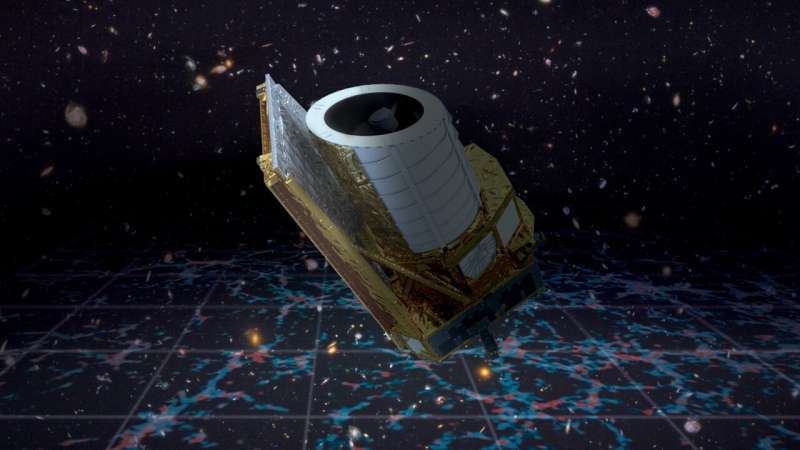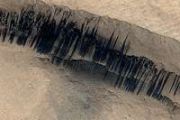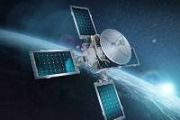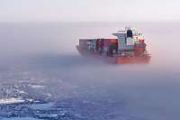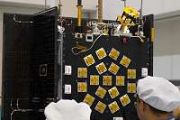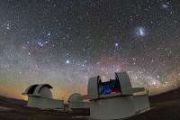
Copernical Team
NASA-JPL Psyche launch on track with 'outstanding' progress, review board confirms
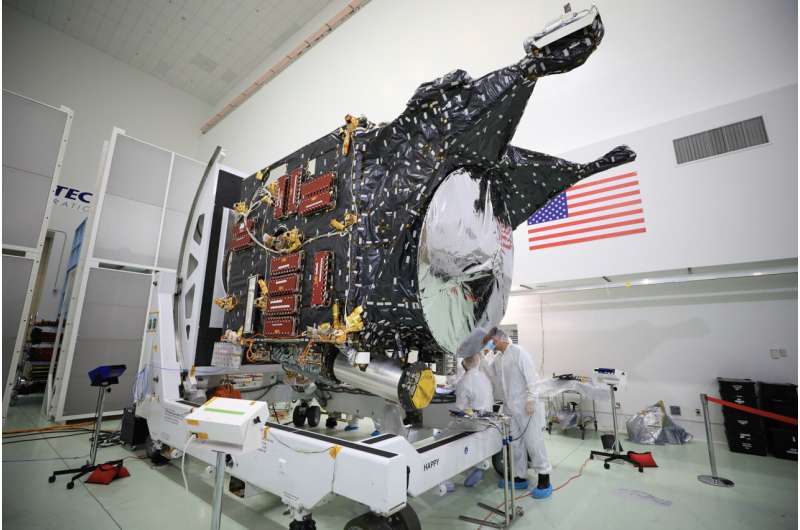
Steps taken by NASA, the agency's Jet Propulsion Laboratory (JPL) in Southern California, and Caltech, to put the Psyche mission on track for an October 2023 launch have been outstanding, according to an independently appointed review board. NASA and JPL convened the board last summer after the Psyche mission team requested to delay the spacecraft's August 2022 launch to a metal-rich asteroid of the same name.
SpaceDaily.com set to scrap all Network Advertising
 Digital advertising is changing course and SpaceDaily.com, with its 25 high-tech websites including SpaceWar.com, SolarDaily.com, GPSDaily.com, and RoboDaily.com, is onboard with this change. Simon Mansfield, publisher of Space Media Network says the major ad networks are a broken business model due to their disregard for demographic specifics, leading to questionable ad relevance, and site perf
Digital advertising is changing course and SpaceDaily.com, with its 25 high-tech websites including SpaceWar.com, SolarDaily.com, GPSDaily.com, and RoboDaily.com, is onboard with this change. Simon Mansfield, publisher of Space Media Network says the major ad networks are a broken business model due to their disregard for demographic specifics, leading to questionable ad relevance, and site perf China questions whether there is a new moon race afoot
 The moon is the only natural satellite of Earth. It is also the nearest celestial body to our planet, and selenology, or the study of the moon, is very important for scientists, as it can give them insights into other celestial bodies and advance planetary science. If we want to know the history of Earth, together with the history of our solar system, studying the moon is essential.
The ex
The moon is the only natural satellite of Earth. It is also the nearest celestial body to our planet, and selenology, or the study of the moon, is very important for scientists, as it can give them insights into other celestial bodies and advance planetary science. If we want to know the history of Earth, together with the history of our solar system, studying the moon is essential.
The ex Dying stars' cocoons could be new source of gravitational waves
 So far, astrophysicists have only detected gravitational waves from binary systems - the mergers of either two black holes, two neutron stars or one of each. Although astrophysicists theoretically should be able to detect gravitational waves from a single, non-binary source, they have yet to uncover these elusive signals.
Now Northwestern University researchers suggest looking at a new, un
So far, astrophysicists have only detected gravitational waves from binary systems - the mergers of either two black holes, two neutron stars or one of each. Although astrophysicists theoretically should be able to detect gravitational waves from a single, non-binary source, they have yet to uncover these elusive signals.
Now Northwestern University researchers suggest looking at a new, un GomSpace and ESA cancel next phase of climate observation mission
 In European space news, GomSpace and ESA have decided not to proceed to the next phase of the CubeMap mission, a climate observation initiative. The mission had been envisaged as a collaboration between the ESA, Denmark-based GomSpace, and UK-based RAL Space.
In December 2021, GomSpace and RAL Space signed a contract with the European Space Agency (ESA) for the Scout-1 Mission, otherwise k
In European space news, GomSpace and ESA have decided not to proceed to the next phase of the CubeMap mission, a climate observation initiative. The mission had been envisaged as a collaboration between the ESA, Denmark-based GomSpace, and UK-based RAL Space.
In December 2021, GomSpace and RAL Space signed a contract with the European Space Agency (ESA) for the Scout-1 Mission, otherwise k Scrubbing Hubble images of satellite light tracks
 When the Hubble Space Telescope was launched in 1990, there were about 470 artificial satellites orbiting Earth. By 2000, that number doubled. But by 2023, the rising number has grown almost exponentially to nearly 8,000 satellites. For Hubble this means that satellites photobomb about 10% of its exposures on celestial targets. But a typical satellite trail is very thin and will affect less than
When the Hubble Space Telescope was launched in 1990, there were about 470 artificial satellites orbiting Earth. By 2000, that number doubled. But by 2023, the rising number has grown almost exponentially to nearly 8,000 satellites. For Hubble this means that satellites photobomb about 10% of its exposures on celestial targets. But a typical satellite trail is very thin and will affect less than Astroscale working Share My Space to facilitate space risk identification
 In an effort to bolster the surveillance of space objects and mitigate the risks associated with increasing satellite population, Japanese in-orbit servicing company Astroscale has partnered with French space surveillance startup, Share My Space. This collaboration aims to facilitate effective identification of space risks, with Astroscale enlisting the advanced services of Share My Space in the
In an effort to bolster the surveillance of space objects and mitigate the risks associated with increasing satellite population, Japanese in-orbit servicing company Astroscale has partnered with French space surveillance startup, Share My Space. This collaboration aims to facilitate effective identification of space risks, with Astroscale enlisting the advanced services of Share My Space in the LeoStella builds and delivers its 20th satellite
 LeoStella, the U.S.-based satellite manufacturer, has successfully delivered its twentieth satellite since its inception in 2019. This accomplishment signals a key milestone in the firm's growth trajectory. The latest delivery, the third of its kind, was made to Loft Orbital Solutions.
LeoStella's 20th satellite was based on its LS-100 bus platform, marking another achievement for the manu
LeoStella, the U.S.-based satellite manufacturer, has successfully delivered its twentieth satellite since its inception in 2019. This accomplishment signals a key milestone in the firm's growth trajectory. The latest delivery, the third of its kind, was made to Loft Orbital Solutions.
LeoStella's 20th satellite was based on its LS-100 bus platform, marking another achievement for the manu Apogeo Space contracts Momentus to orbit 9 satellites for IoT constellation
 Momentus Inc., a public company trading on the NASDAQ under the ticker MNTS, is set to deliver nine satellites into orbit for Apogeo Space's Internet of Things (IoT) constellation. The move represents a significant step in Apogeo's ambitious project of developing a 100-satellite network, further demonstrating the growing collaboration between these two space technology firms.
Apogeo Space'
Momentus Inc., a public company trading on the NASDAQ under the ticker MNTS, is set to deliver nine satellites into orbit for Apogeo Space's Internet of Things (IoT) constellation. The move represents a significant step in Apogeo's ambitious project of developing a 100-satellite network, further demonstrating the growing collaboration between these two space technology firms.
Apogeo Space' 
